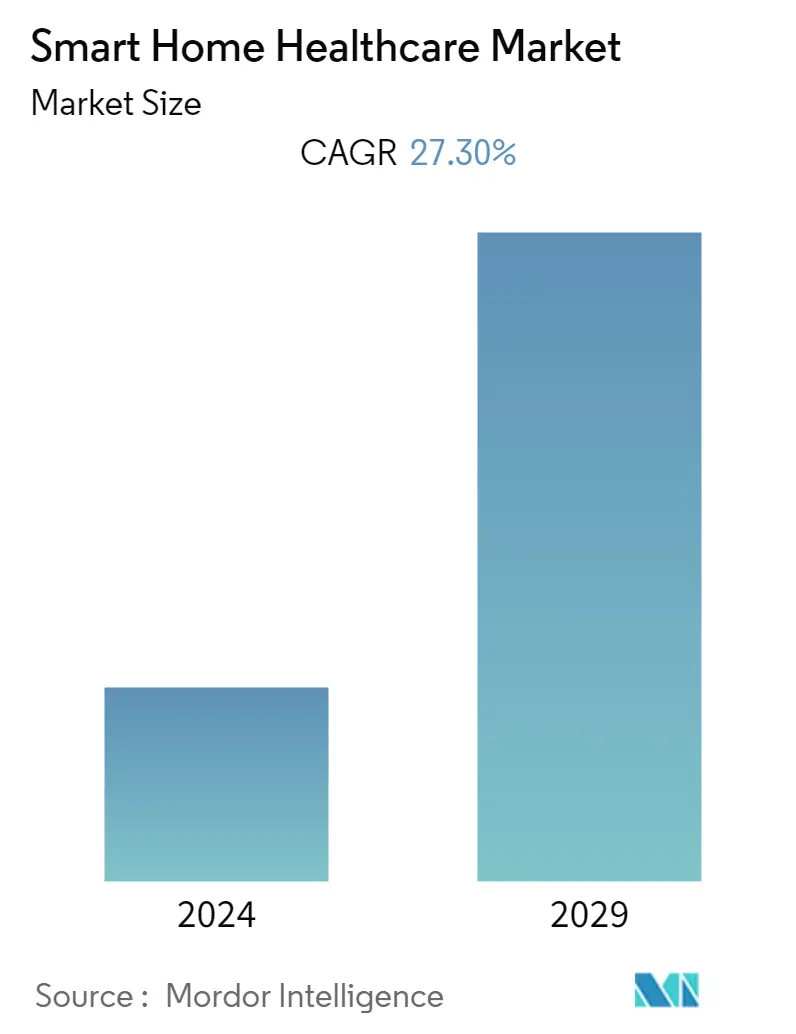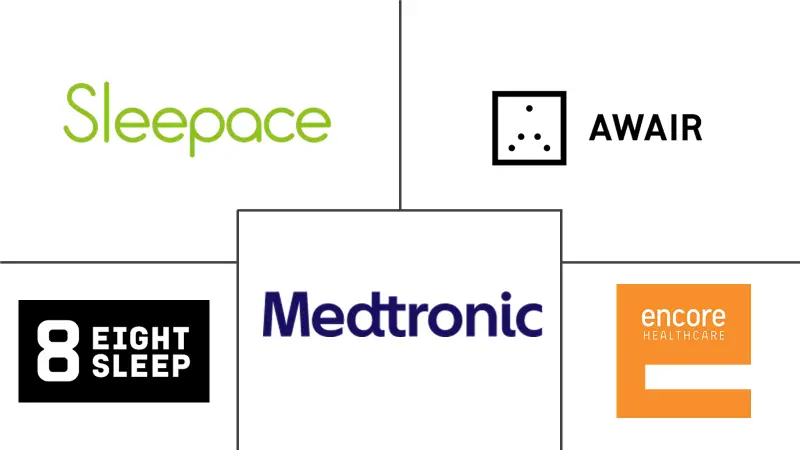Market Size of Smart Home Healthcare Industry

| Study Period | 2019 - 2029 |
| Base Year For Estimation | 2023 |
| CAGR | 27.30 % |
| Fastest Growing Market | Asia Pacific |
| Largest Market | North America |
| Market Concentration | Low |
Major Players
*Disclaimer: Major Players sorted in no particular order |
Need a report that reflects how COVID-19 has impacted this market and its growth?
Smart Home Healthcare Market Analysis
The Global Smart Home Healthcare Market is expected to register a CAGR of 27.3% over the forecast period. The increasing adoption of IoT devices motivates the smart home healthcare market players to focus on launching such products. The potential for healthcare services to be provided in a smart home is growing alongside this trend.
- Connected homes can also help hospitals increase efficiency, prioritizing cases based on urgency and freeing-up beds. 90% of the nation's USD 3.3 trillion annual healthcare expenditure is spent on individuals with chronic and mental health conditions, according to the Centers for Disease Control and Prevention.
- These patients would be helping hospitals save on monitoring and rehabilitation expenses by availing of services at home.
- Due to technological advancements, the self-care revolution has witnessed online pharmaceutical stores, telemedicine, and remote patient monitoring. Soon, smart homes will be the sources of primary care. Ongoing monitoring has been facing issues because the in-home care industry is expected to fill an estimated 4.7 million home care jobs, as per PHI. Then, Paul Osterman from MIT estimated that the LTSS field requires additional 13.1 million family caregivers from 2015 to 2040 and currently faces a shortfall of up to 11 million caregivers.
- A growing aging population leads to an urgent need to find ways to improve patient outcomes and access to care and reduce the overall cost. The active aging industry in the United States includes safety and smart-living technologies, health and remote care, and wellness and fitness technologies.
- Across the growing home healthcare field, the portability and dissemination of computerized patient records serve as a significant health data risk to interception by hackers, leading to the violations of the Health Insurance Portability and Accountability Act (HIPAA). Such violations could attract substantial penalties and fines for operators/device manufacturers and service providers across the smart home healthcare segment. As technology advancements continue in the home healthcare field, providers and their parent companies must balance potential risks against these technologies' benefits.
- During the COVID-19 pandemic, connected health and RPM (remote patient monitoring) became more pervasive. These methods and services enabled physicians to monitor patients contactless, preventing the spread of the novel coronavirus. This facilitated them by increasing the bed space for patients with severe cases. Hospitals, since then, have been actively supporting the usage of connected health and RPM and fostering the same toward building a smart home healthcare lifestyle, even in the post-pandemic world.
